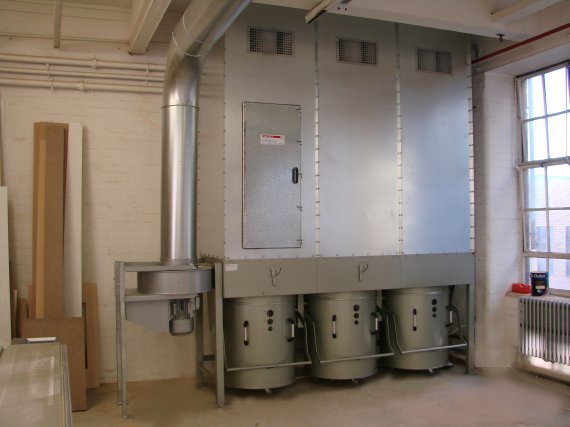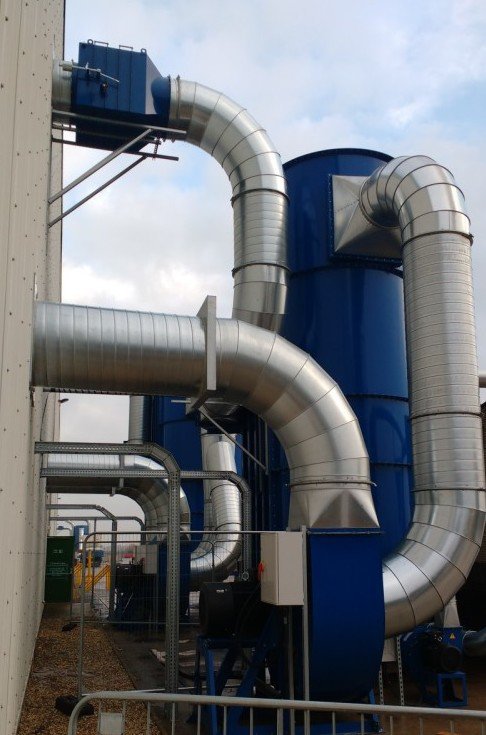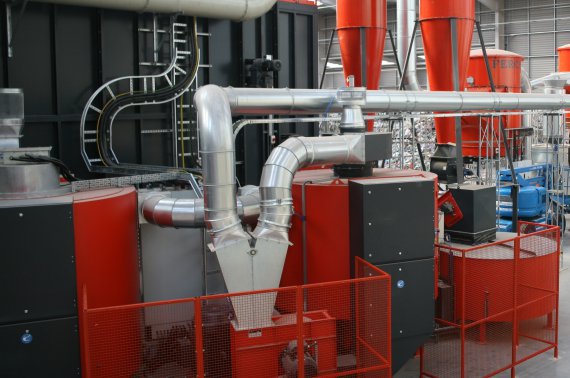
Kelly Rose
Editor

Kelly Rose
Editor
Dust extraction systems are essential within a factory or manufacturing set up, in order to protect the health and wellbeing of employees. Ventilation is key where health and safety is concerned, particularly in the case of woodworking projects, where fine dust can be prevalent. Dust inhalation is a serious matter, which is reflected in the 12,000 respiratory deaths that occur each year in the workplace.
Lost working days are also a huge problem within workplaces where industrial ventilation is required – 400,000 days a year to be exact. With around 14,000 new workplace breathing or lung-related conditions reported each year, respiratory health is clearly a very current issue within the workplace that needs to be addressed and tackled head on. It is a particularly tragic statistic, as with the right equipment and servicing dust extraction can effectively take place and employees will be kept safe.
What is a Local Exhaust Ventilation (LEV) assessment?
A Local Exhaust Ventilation System is one which controls pollutants at source and is the most effective means of ventilation and extraction, so it makes perfect sense that the HSE encourage workplaces to install and use this type of system in order to lessen the amount of respiratory illnesses and deaths.
With an LEV system, as with any other sort of ventilation system or machine, a mandatory service should take place. The LEV assessment should be conducted at least every 12-14 months or when a system alteration takes place. This ensures that any issues with dust or fumes for that matter, are picked up and the ventilation system is serviced so that it works to the highest efficiency that it can. CoSHH regulations identify around 40,000 substances that are used within the ventilation industry but have known harmful effects and staff should be protected against.
What will happen when my LEV system is tested?
A trained CoSHH engineer from the industrial hygiene team will carry out a service. An LEV assessment will comprise a quick visual check of the system and then a more in depth assessment of the following:
After each assessment has been completed, a comprehensive report with detailed recommendations for maintenance or modification will be supplied. As a business it is your responsibility to keep your system logbook updated but the engineer should also check each logbook is correctly filled out and kept up to date.
Keep your staff safe
According to the HSE 12,000 lung disease deaths a year are estimated to be linked to past exposure at work. 18,000 estimated annual new cases of self-reported work-related breathing or lung problems are reported. Chronic Obstructive Pulmonary Disease (COPD) contributes to 33% of estimated current annual deaths, which is most closely linked to dust exposure, commonly found in the workplace. Flour and wood dusts were among the most commonly reported causes of occupational asthma from 2012 – 2016.
All of which can be efficiently extracted with the correct type of dust control systems installed and maintained. It is the same for paint spray fumes, which are easily extracted with the right products and engineers to design a system unique to your business’s outputs.
If staff are ill, it also leads to lost work days, with 23.5 million working days lost in the UK to work-related ill health each year.
Changing attitudes
A recent study into the construction industry (CDP/IOSH construction dust industry survey) found that employers view dust control as ‘labour intensive, expensive, time-consuming and a nuisance that slows work. Time is money’. Employees on the other hand have the view that: ‘it’s only dust. What harm can it do? I’ll wash it down with a pint’. Or that ‘it’s unpleasant to get it in your throat, up your nose or in your eyes but that’s just part of getting the job done.’
It seems there is a great deal of work that needs to be done to educate not only the construction industry but all industries where staff are working in dust emitting environments. Dust can be dangerous when not properly extracted and it is a necessary requirement in order to stop fatal lung diseases.
Fercell wants to also oppose the opinion of companies thinking that it is time-consuming and expensive. Engineers can fit a dust extraction system, depending on size, from a few hours to a matter of days for larger systems. We always endeavour to work around customer schedules to ensure their working day is as least effected as possible. Maintenance need only be done once a year, unless something stops working. Consumables can be ordered quickly and easily and can be set up so that they are sent out on a routine basis to save even more time on admin.
Fercell has a dedicated ventilation team to answer any questions you may have on dust extraction and can arrange to visit and quote for your dust extraction system. It also has a team of LEV trained engineers who can undertake assessments.



Unit 1 Old Mill Lane
Aylesford
ME20 7DT
UNITED KINGDOM
01622 791414